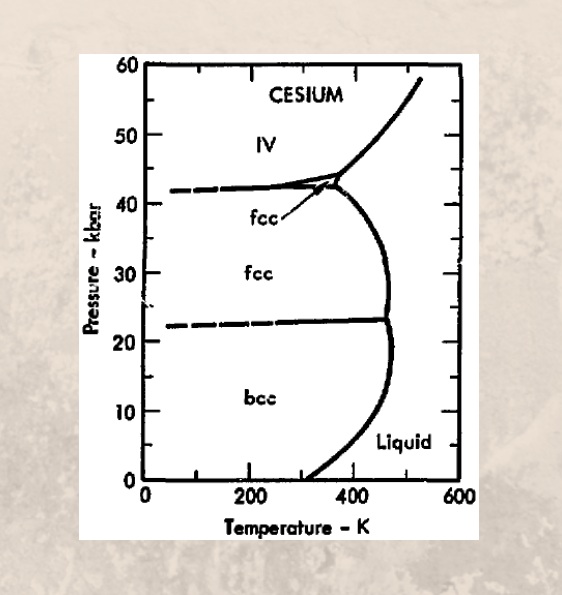
Sublimation in chemistry refers to the phase transition in which matter changes state from a solid immediately into a gas, without passing through an intermediate liquid phase. Sublimation occurs when atmospheric pressure is too low for a substance to exist in liquid form. Sublimation is the inverse of deposition, the phase transition in which gas goes immediately to a solid state. Whether or not a substance will sublimate from a solid to a gaseous state depends on the triple point of the substance, the temperature and pressure at which a substance exists in equilibrium as the three states of matter.
A substance will only sublimate at temperatures and pressures lower than the substance’s triple point.
“Life is water, dancing to the tune of solids.” — Albert Szent-Gyorgyi
Sublimation occurs due to the absorption of heat through solid materials. Solid materials absorb heat which excites the constituent molecules. Excited molecules move quickly enough to escape the attractive forces of other molecules and sublime in the atmosphere. In fact, the same mechanism drives the evaporation of liquids into gasses. Depending on the temperature and pressure, the escaped molecules with either melt into a liquid or sublime into a gas. Sublimation is a physical transition of state so it does NOT refer to the process by which chemical reactions convert solid reactants into gaseous products. Combustion reactions like burning wood do not count as sublimation as combustion is a chemical reaction caused by the oxidization of reactants. Sublimation requires the input of energy and is thus an endothermic reaction.
Phase Diagrams And Sublimation
The phase transitional properties of matter can be represented by a phase diagram. A phase diagram is a visual representation of how a substance changes phase. It is a 2-D graph that shows the relationship between temperature/pressure and the particular state of matter a substance will take at those temperatures and pressures. For example, at normal pressure and temperature water can exist as a solid, liquid or gas. Carbon dioxide, in contrast, can only exist as a gas at normal temperatures and pressures.
“True life is lived when tiny changes occur.” — Leo Tolstoy
The lines on the phase diagram corresponding to points where a substance will undergo a phase transition from one state to another. Therefore, in the above picture, sublimation refers to any transition between the two sections divided by the bottom line. At normal pressures and temperatures, most compounds would have to transition through a liquid state to go from a solid to a gas. However, due to effects from the vapor pressure of a substance, many common substances like water will sublimate at appreciably low temperatures at normal atmospheric pressures.

A phase diagram for the element Cesium. Image licensed under CC0
The enthalpy of sublimation is a measure of how much energy in the form of heat is required to transition one mole of a substance from a solid state to a gaseous state at standard temperature and pressures. Measured in kJ/mol, the enthalpy of sublimation can be calculated by adding the enthalpy of fusion and enthalpy of vaporization of a substance, the energies required to convert a substance from a solid to a liquid and a liquid to a gas, respectively. So in a sense, one could think of sublimation almost like the simultaneous melting and evaporation of a solid substance.
Sublimation Use And Examples
The most common example of sublimation is dry ice sublimating into gaseous carbon dioxide. Solid carbon dioxide will sublimate at -78.5°C at standard pressures, so a block of dry ice in the open will sublimate very noticeably, hence the use of dry ice in fog machines. The pressure of the triple point of carbon dioxide is very high, so it is hard to get gaseous carbon dioxide through the evaporation of liquid carbon dioxide.
Naphthalene is another solid substance found in moth pesticides that sublimates very easily at room temperatures as it is composed of non-polar molecules held together only by weak van der Waals forces. In general, the weaker the strength of a substances chemical bonds, the less energy input required for the solid to sublimate into a gas. Other naturally occurring materials that will sublimate at standard temperatures and pressures include iodine and arsenic. Technically though, any substance will sublimate provided it is at the right temperature and pressure.
“If I melt dry ice, can I swim without getting wet?” — Steven Wright
Sublimation has also used in laboratories as a means of purifying compounds and substances. Solid material is placed in an artificial vacuum and heated. The low pressure in the vacuum and high temperature causes the pure substance to sublimate and collect on a cooled surface. The pure substance can then be gathered from the cooled surface. Controlling the rate of sublimation consequently controls the relative purity of the sample. Alchemists during the middle ages used this technique to separate substances from each other and viewed the process of sublimation as a mystical “spiritualization” of the body
The processes of sublimation and its inverse deposition are crucial for the water cycle on Earth. In addition to evaporation from liquid water, the atmosphere gets its water from the sublimation of water ice from cold regions and high altitudes. “Chinook winds” extremely dry gusts of wind that occur at high altitudes and low temperatures, in addition to sunlight will sublimate snow directly into water vapor. Sublimation is a common way for snow to be removed from cold arid regions like the western Rocky Mountains or Mount Everest. The sublimated vapor is then gathered in the atmosphere where it condenses and deposes into clouds of water and ice crystals. Sublimation is also one of the main mechanisms of glacial ablation. Water ice in the cold, dry, and low-pressure regions where glaciers form will sublimate due to energy from the sun. The resulting loss of mass can cause large chunks of glaciers to break off.









